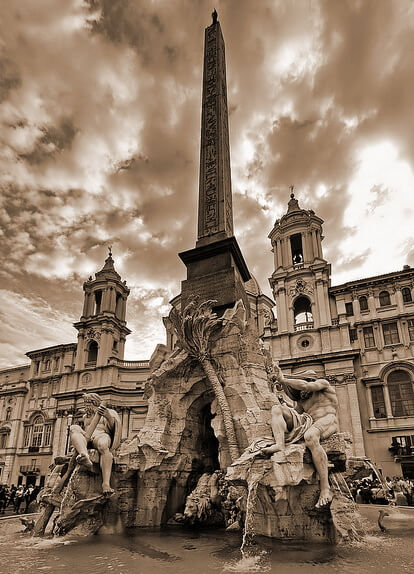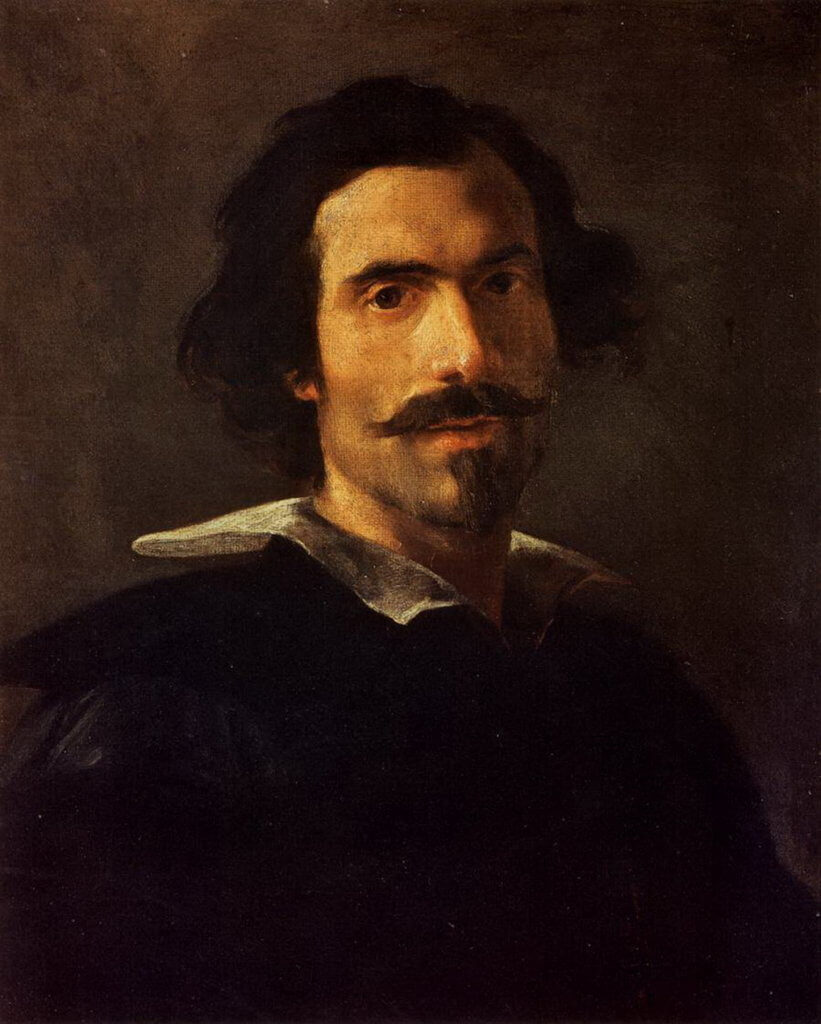
BERNINI: THE RIVER’S FOUNTAIN IN PIAZZA NAVONA
Every era had artists that were considered the best of their time, obviously when some of them had to work at the same time on the same city, contrasts often became harsh and irreverent even if sometime they smack of gibe.
A historical episode is related to the realization of the Fountain of the Four Rivers in Piazza Navona in Rome.

River’s fountain in Piazza Navona – Roma
It was commissioned by Pope Innocent X to the great artist Gian Lorenzo Bernini in the mid-seventeenth century.

Gian Lorenzo Bernini
In the same period and in the same plaza, another great artist of that era, Francesco Borromini, was working on the facade of the church of Sant’Agnese in Angone.

Francesco Borromini

Sant’Agnese’s church and River’s fountain – Piazza Navona, Roma
Their relationship was based on an acrimonious rivalry, born, we suppose, already when they had to realize together the magnificent bronze canopy for the main altar at St. Peter’s, the Baldacchino, for which Bernini is remembered as the only author.
To really understand what it meant for those two artists to work at two such majestic works on the same plaza, you have to imagine how difficult it was to lift heavy weights at that time.
All scaffolding for the handling and positioning of marbles were made of wood and rose around the buildings for several meters to allow an easier work.
Well, between the fountain and the church, there is a distance of about forty meters, so try to imagine how hard it was for the two different labours team to work.
Much of what was written in the past about the reasons why the one or the other artist chiselled his sculptures to deride his foe is mostly legend, like for example the fact that Bernini shaped the sculpture of the Rio della Plata as a man protecting himself with a raised hand from the imminent fall of the building build by Borromini.
True is that once Bernini placed an amazing Egyptian obelisk, 17 meter high and ten tons heavy, in the middle of the fountain, Borromini and his entourage mocked him because the centre of the base housing the obelisk was hollow, so they bet on how long it would have taken it to fall for the too much weight.
Seek of these mockery, one night Bernini gave instruction to secure four ropes from the top of the obelisk to the hands of the statues and obliged his entourage to support the opinion that this was the most appropriate support to make the monument stable.
He made the Borromini be the laughing stock of his followers, and today, after nearly 400 years, the obelisk is still there.
Sometimes men try to counter those who deride them turning the joke to their advantage, when they achieve without contempt, grotesque or humiliation everybody will smile for their smart remarks.
Editor’s note
This article contains general information. For questions and curiosities leave a comment below. If you wish to be contacted, please fill out the form.




dinosaurriverexpeditions
24 January 2018 at 5:25Had a great time reading this wonderful article.
Arte 2000
5 February 2018 at 11:37Thank you! For us it’s a pleasure to tell these anecdotes